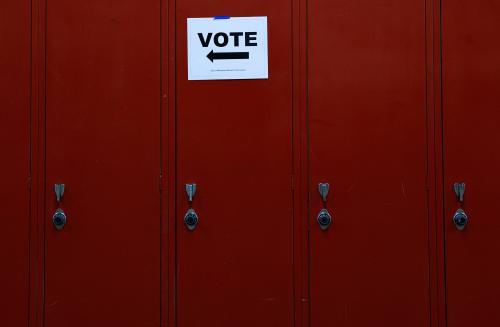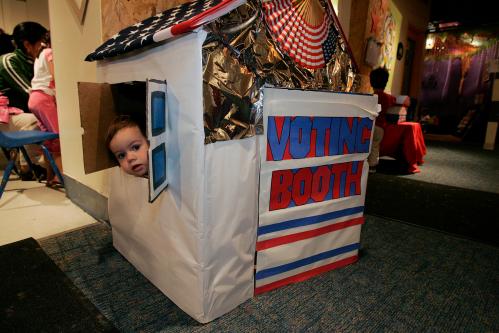Two board members of the Los Angeles Unified School District (LAUSD) secured their re-election bids earlier this month in a contest characterized by historically low turnout. The Los Angeles Times called the 12 percent voter participation rate “abysmal,” and the two incumbents won easily despite the district’s relatively flat test scores in recent years. LAUSD continues to lag behind state averages in terms of academic performance, and board member Ref Rodriguez recently expressed concern over the lack of improvement, saying, “Incremental [improvement] doesn’t work for me, and it doesn’t work for kids.”
School districts are the most common form of special district government in the U.S. And yet, we know little about how voters evaluate school district board members. Do people assess incumbents based on district performance, or do they have some other metric in mind when they cast their ballots? In recently published work in Legislative Studies Quarterly, I address this question by examining over a decade of longitudinal data on district test scores and school board election results in California.
I find that when school board elections are held in presidential years, voters reliably punish and reward incumbents based on how well the district performed academically. To control for differences in quality across school districts, I employed a two-way fixed effects strategy that allowed me to estimate how test score changes affected incumbent success rates in the same district over time. The results indicate that each standard deviation increase in district test scores leads to a 4 percent increase in the percentage of incumbents winning re-election in that district. But this effect only appears in presidential election years: When elections are held in off-years, there is no relationship between changes in district test scores and incumbent re-election rates.
I argue that these results are likely driven by low turnout in off-cycle elections. Local elections held concurrently with major national or state races encourage broad participation because voters are already at the polls and attuned to political issues. On the other hand, off-year contests are less visible and attract a different pool of voters. In particular, members of groups that will be disproportionately affected by an election tend to turnout no matter when that election is held. For example, teachers and their unions dominate school board elections because board members make decisions that directly affect their day-to-day jobs.
When it comes to the relationship between achievement and school board election results, ordinary voters likely view test scores as a valuable source of information about school board effectiveness. School district quality is an important determinant of local housing values, and John Holbein has demonstrated that voters opt to move out of neighborhoods when educational performance deteriorates. Moreover, district achievement scores might provide a useful shortcut for voters attempting to cast their ballots in the low-information environment that typifies local elections.
However, teachers and the other voters who dominate off-year elections almost certainly evaluate board members on a broader and more nuanced set of criteria than just test scores. For example, the California Teachers Association priorities include less testing, smaller class sizes, safe school environments, higher salaries, and more time for professional development. As a result, we should expect to see a positive relationship between academic achievement and school board incumbent performance when ordinary voters head to the polls in high-turnout election years—but not necessarily in off-years when only a specialized subset of the electorate turns out to vote. My research shows that this is exactly the pattern that has occurred in California over the past decade.
However, while voting school board members out of office when test scores drop might be a rational response by voters seeking to induce local accountability, it is not clear that this is a normatively desirable result. For one thing, school boards likely have only a modest ability to shape academic performance in their districts. If this is true, then replacing school board incumbents will not necessarily increase student achievement. In fact, increased turnout among district leaders might actually harm districts. School board members may gain valuable experience from their time serving in office, in which case a constant influx of new members might further disadvantage failing schools.
My results demonstrate that election timing matters when it comes to the relationship between district test scores and school board incumbent re-election rates, and future research should work to determine whether these voting patterns ultimately help or hurt school districts.






Commentary
Test scores and school boards: Why election timing matters
March 22, 2017